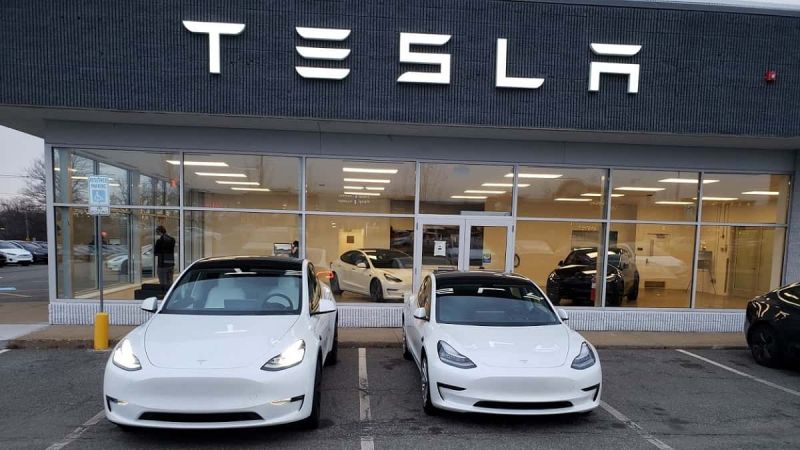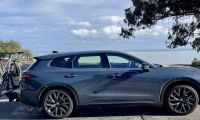At the time this story was written, a share of Tesla stock was priced at $106. One year ago, on January 3rd, 2022, the price was $400, rounding to the nearest dollar. How has Tesla’s stock lost three-quarters of its value? The answer is not in the math.
Read CNN's View Point: Tesla shares are down 70% for the year
Read the Viewpoint of Investor's Business Daily: Tesla (TSLA) plummeted to a two-year low
Tesla has the capacity to ship more cars than ever. Its factories are state of the art. Tesla’s products earn extremely high ownership satisfaction scores from their owners (as reported by Consumer Reports). Gas prices have been crazy high, and Tesla offers an alternative to gas. The planet’s kooky climate seems to grow ever wonkier. You would think that a product that emitted no greenhouse gases might be all the rage.
Yet, despite all of these things pointing to a very bright future for Tesla, its investors are only willing to pay a quarter as much today for a share as they would one year ago. Imagine if you could buy a gallon of gas, a kWh of electricity, or a rhubarb for just one-quarter of its price a year ago. You would be stunned, right? After all, the dollar has lost about 9% of its value over this same period. Everything costs more today. But not Tesla stock.
The reason for Tesla’s stock drop isn’t found in its vehicle’s built-per-minute rate. Or Tesla’s profit per car shipped. Or in its total shipments made. These are looking rosy. The reason investors see Tesla as less valuable is that the bloom is off the rose.
Search the EV publications that only report the good news for EVs, and you will see that it is the Hyundai Ioniq 5 that is getting all the electric vehicle car awards. Rivian and Ford are now the industry leaders by a country mile in electric pickup trucks. In the ridiculously expensive and ridiculously overpowered world of EVs, Lucid is the hot model, not a decades-old Model S. When Waymo needed a three-row robotaxi to automate, it looked to a plug-in Chrysler, not a super-expensive Tesla. Think about it; Why would an expensive performance-oriented vehicle like a small EV sedan (Model 3) ever be a good fit as a robotaxi when for the same money, one can operate a much roomier vehicle with more cargo and passenger capacity? Tesla is way behind in the robotaxi race it invented.
People are also starting to ask why six brands now provide a hands-free driver assist package, and none of them are a Tesla. The biggest FSD naysayers tend to be FSD owners. The few that there are. When last we checked, Tesla’s FSD take-rate was barely in the double digits.
Then there is the slow roll of over-promised and under-delivered models from Tesla. The imaginary new Roadster. The Cybertruck prototype growing so old it has been redesigned before it was ever released. The “Don’t peek behind the curtain” semi that began its “deliveries” you can count on one hand and which Tesla’s partners/customers won't discuss. And finally, the ever-popular but nonexistent affordable Tesla that will, of course, cost “Half what a Model 3 does.”
Among all of our reasons for Tesla’s stock dropping like a rock isn’t Elon Musk’s purchase of a social media site. Maybe there is causation there, but when we look at the graph of Tesla’s stock drop, it sure looks like it was on the same path before the Twitter fiasco as after.
Is there any logic to any stock price, setting aside Tesla for a moment? If so, it sure is hard to see. Rivian seems to be all roses, but its stock did even worse than Tesla’s over the past year, while the stock price of Honda, which has precisely zero EVs on sale, pretty much mimicked the Dow and S&P indexes over the last year.
One thing that many industry experts can easily agree upon is that the data now show without any doubt that every EV built by every automaker sells. And sells immediately. Toyota RAV4s with plugs have been selling at markups as high as $20K over sticker. Maybe Tesla EVs are not that special in the eyes of the consumers who buy vehicles? Maybe they were just, you know, there first.
Why do you think Tesla’s stock has seen a slide down from its high point fourteen months ago? Tell us in the comments below.
Author note: The author has never purchased an individual stock in his life and makes no claims to understand the stock market.
Image of Tesla retail outlet with Model Y and Model 3 for sale by John Goreham.
John Goreham is a long-time New England Motor Press Association member and recovering engineer. John's interest in EVs goes back to 1990 when he designed the thermal control system for an EV battery as part of an academic team. After earning his mechanical engineering degree, John completed a marketing program at Northeastern University and worked with automotive component manufacturers, in the semiconductor industry, and in biotech. In addition to Torque News, John's work has appeared in print in dozens of American news outlets and he provides reviews to many vehicle shopping sites. You can follow John on TikTok @ToknCars, on Twitter, and view his credentials at Linkedin
Re-Publication. If you wish to re-use this content, please contact Torque News for terms and conditions.












